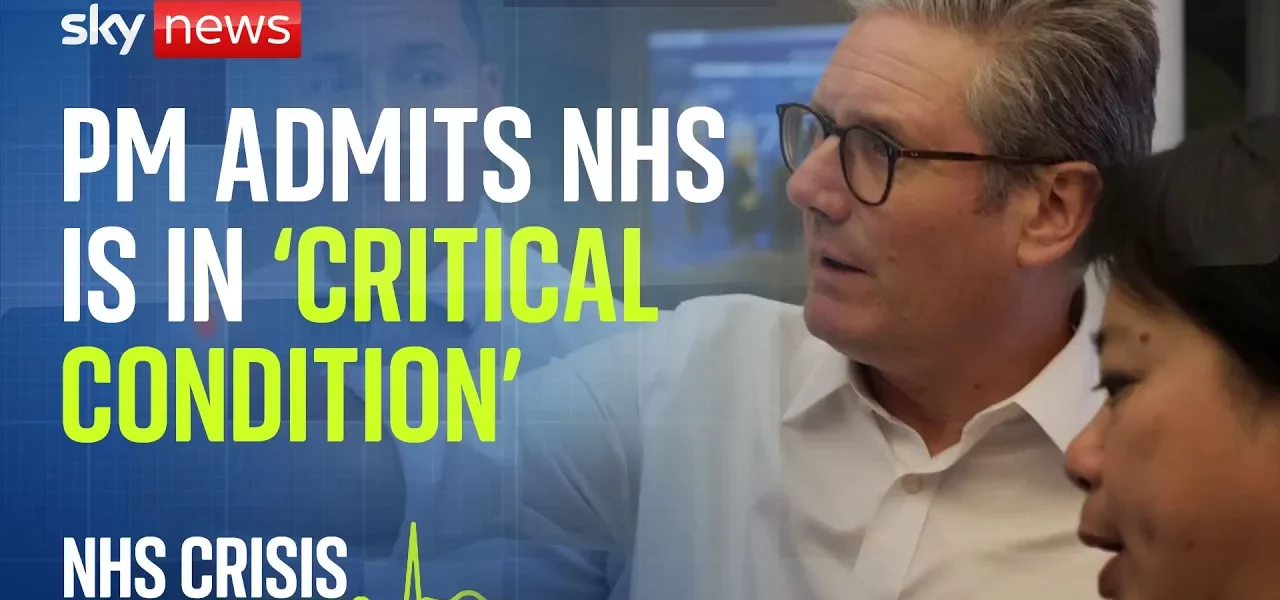The NHS Can Be Saved: K Stama’s Response to a Damning Report into the Health Service

The NHS is facing unprecedented challenges, as highlighted by a recent report revealing critical issues within the health service. This article explores the findings of the report, K Stama’s response, and the paths to reform that could potentially revive this vital institution.
Introduction
The National Health Service (NHS) is a cornerstone of healthcare in the UK, yet it finds itself in a precarious situation, grappling with rising waiting lists, increased patient demand, and insufficient resources. A recent investigation led by Lord Dary has unveiled alarming trends that necessitate immediate attention and long-term reforms. K Stama’s response to these challenges marks a pivotal moment in the discourse surrounding the future of the NHS. This article delves into the crucial aspects of the report, the proposed reforms, and what they mean for patients and healthcare providers alike.
The Current State of the NHS
The NHS is currently under significant strain, with key indicators showcasing a system in distress. The findings from Lord Dary’s investigation paint a stark picture:
- Waiting lists have surged, with some reports indicating a doubling in the last 15 years.
- Emergency services (A&E) experienced the busiest summer on record.
- UK cancer mortality rates are higher than in comparable countries.
These statistics highlight not just the volume of patients needing care, but also the systemic issues that have contributed to these trends, including an over-reliance on hospital services and inadequate community healthcare support.
K Stama’s Proposed Reforms
K Stama’s approach to addressing the NHS’s challenges emphasizes a two-pronged strategy: immediate relief for current patients and long-term structural reforms. Key elements of his proposal include:
- Long-term Reform: A commitment to overhaul the NHS framework over a ten-year period.
- Resource Allocation: Ensuring that funding is directed more towards community health services rather than just hospitals.
- Staffing Solutions: Addressing the shortage of General Practitioners (GPs) and primary care staff.
Stama acknowledges that while these changes are essential, they will not yield immediate results. It is crucial to manage public expectations and clearly communicate the timeline for improvements.
The Importance of Community Care
Transitioning care from hospitals to community settings is a focal point of K Stama’s vision. This shift is not merely a preference but a necessity driven by patient needs. The benefits of enhancing community care include:
- Improved patient satisfaction and outcomes.
- Reduced pressure on hospital services, allowing them to focus on acute care.
- Increased accessibility to health services for patients in remote or underserved areas.
However, this transformation requires investment in infrastructure, training, and resources. Stama emphasizes that without adequate support for NHS staff, the envisioned model will struggle to succeed.
Addressing Patient Challenges
For patients like Steve, a cancer survivor facing complex health challenges, the current system is fraught with hurdles. Many patients experience:
- Difficulty accessing timely appointments.
- Long wait times on the phone or at clinics.
- Insufficient communication regarding their care plans.
Stama’s reforms aim to tackle these issues directly by improving appointment systems and enhancing the patient experience through better resource allocation.
Long-Term Vision for the NHS
The long-term vision for the NHS must include a comprehensive strategy that encompasses prevention, treatment, and community engagement. Key components of this vision include:
Preventative Measures
Investing in preventive care is essential for reducing the burden on the NHS. Initiatives may include:
- Restrictions on junk food advertising to promote healthier lifestyles among children.
- Public health campaigns to raise awareness about the importance of early diagnosis and treatment.
Infrastructure Development
Improving the physical framework of healthcare facilities is crucial. This includes:
- Building new community health centers.
- Renovating existing facilities to accommodate more patients.
Conclusion
In conclusion, the NHS stands at a crossroads, facing significant challenges outlined in Lord Dary’s report. K Stama’s response highlights a commitment to not only address immediate patient needs but also to implement long-term reforms essential for the future of the NHS. As these changes unfold, it is imperative for all stakeholders, including healthcare professionals, government officials, and the public, to collaborate towards a sustainable and effective healthcare system. If you or someone you know is affected by the current state of the NHS, we encourage you to stay informed and engaged in the discussion surrounding healthcare reform.
“`




